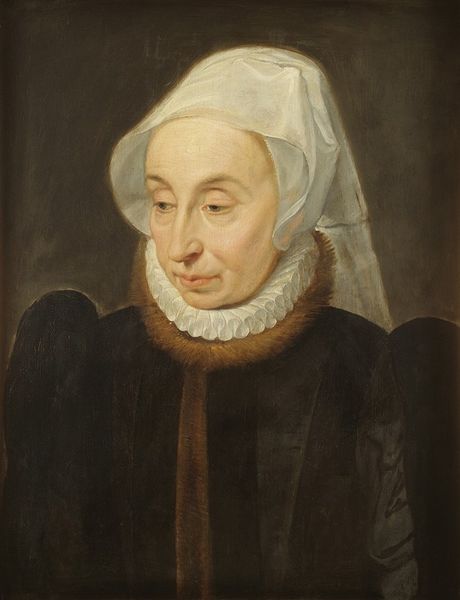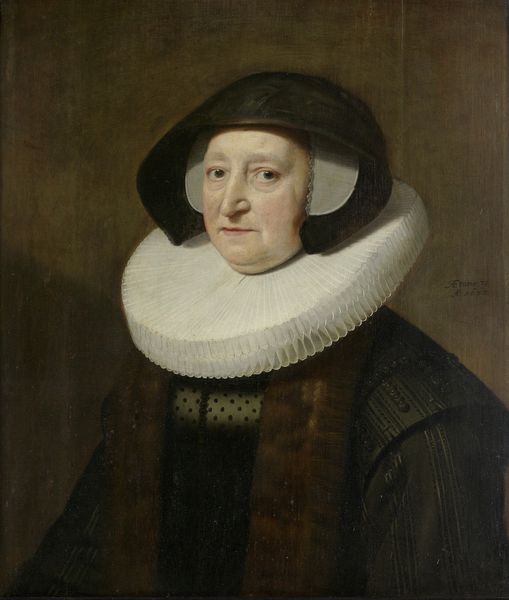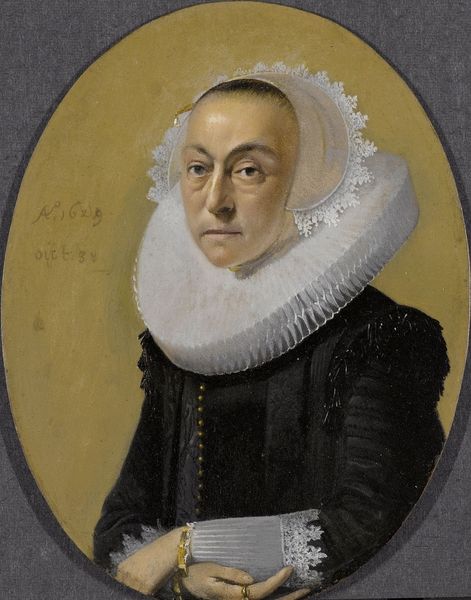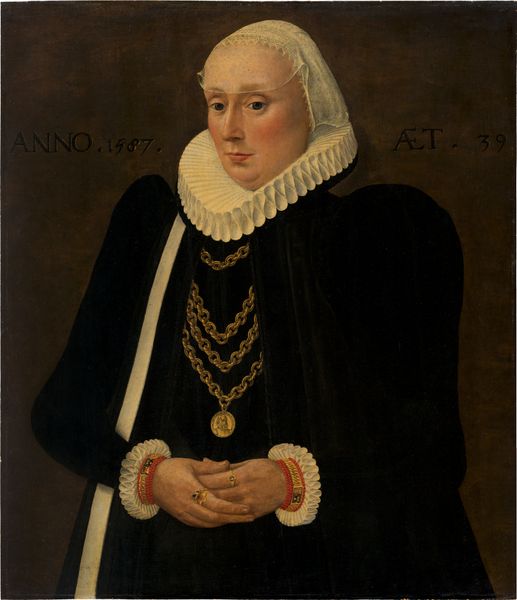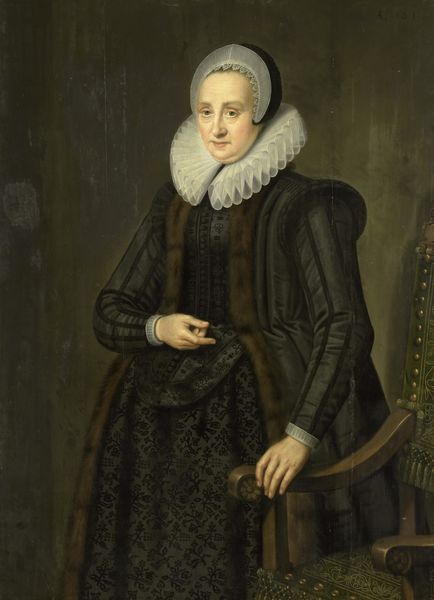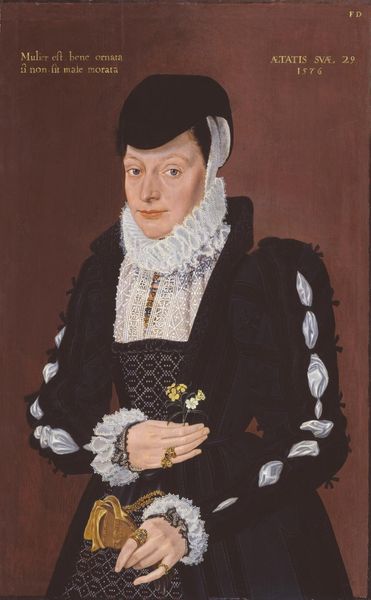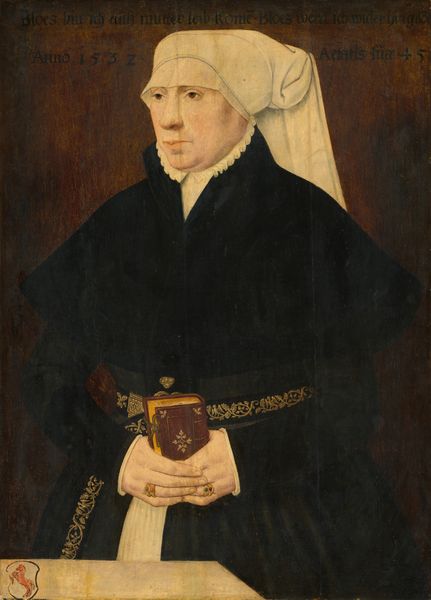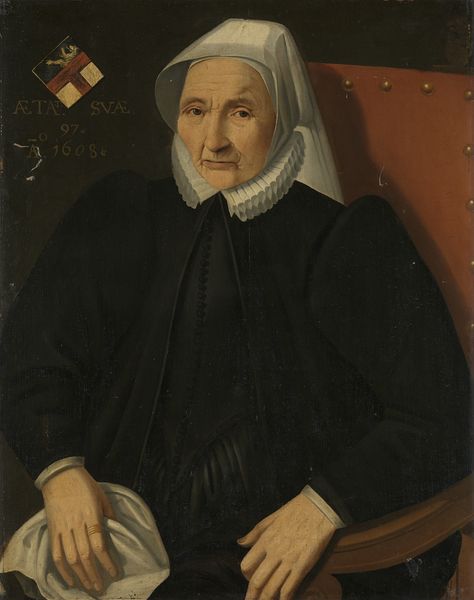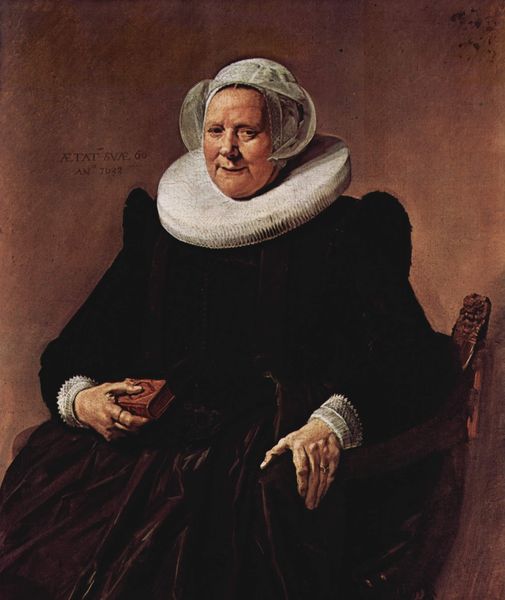
painting, oil-paint
#
portrait
#
self-portrait
#
painting
#
oil-paint
#
11_renaissance
#
history-painting
Dimensions: height 19.2 cm, width 14.2 cm, height 22.3 cm, width 17 cm, depth 1.5 cm
Copyright: Rijks Museum: Open Domain
Editor: Here we have an oil painting from the late 16th century, sometime between 1570 and 1580, entitled *Portrait of a Woman, probably Anna Jagellonia, Queen of Poland*. It is an anonymous portrait. She appears reserved, perhaps even a little severe. What historical context informs how we should read this piece? Curator: Well, let’s consider the public image of powerful women in the Renaissance. Queens often had to project both strength and piety, sometimes navigating complex political landscapes while also fulfilling expectations of feminine virtue. The clothing and severe presentation likely served to establish authority. Editor: It’s interesting to think about how carefully crafted these images were, especially considering this portrait is attributed to an anonymous artist. Did that anonymity play a role in how Queen Anna was portrayed? Curator: That's a great point. While anonymous, the artist was clearly skilled and working within the visual language expected for royal portraiture. Royal portraits, even by unknown hands, followed established conventions and were often circulated to reinforce the queen's image and solidify her reign. Look at the precision of the ruff, the symbolic importance of displaying wealth in the details of dress and jewelry; everything reinforces power. Do you think the plain backdrop serves a purpose? Editor: Perhaps the plain background puts even greater emphasis on the Queen's status through her attire. I hadn’t thought about the role that portraits play in crafting a public image and legitimizing rule back then, almost like carefully curated social media today. Curator: Precisely. We see a complex negotiation between personal identity and the demands of political representation. It is clear she did have a distinct public persona. Editor: This gives me a totally different way to examine the work! Thanks for shining light on these issues.
Comments
No comments
Be the first to comment and join the conversation on the ultimate creative platform.


